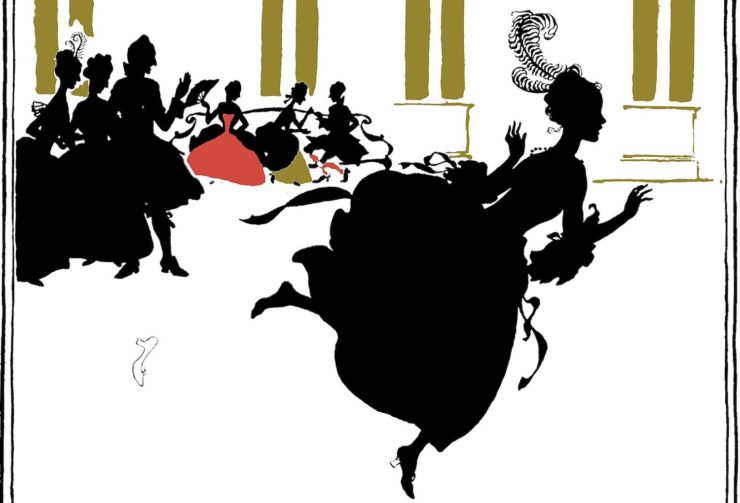“Cinderella” is kind of THE fairy tale, isn’t it? Even people who aren’t fantasy fans, who’ve left all their childish tales behind, who don’t believe in fairies—even those folks know Cinderella. And Cinderella isn’t just a story: it’s become a code word, in a way that no other fairy tale has, for a narrative formula—the classic “rags to riches” tale. Cinderella tells us that no matter how bad we’ve got it, things will get better eventually…at least if we hit on the right combination of hard work, support, and luck. (For what it’s worth, I’d much prefer to be the fairy godmother….)
There are certainly hundreds of interpretations and remixed versions of “Cinderella,” even if you only count the versions that include the glass slippers, the fairy godmother, the pumpkin coach. (Branching out into the more general bracket of “poor, long-suffering woman finds true love while thumbing her nose—politely—at her oppressors” certainly puts us in the thousands, and from there to the simple “rags to riches” formula, I dare not speculate how many stories fall into that category.)
Here, I’ve tried to stick with versions that include the main narrative of the story, told from Cinderella’s point of view (regardless of what she is named in these iterations, we know who we’re talking about) rather than the myriad tales told from a stepsister’s (Gregory Maguire) /rat’s (Philip Pullman) /coachman’s (David Henry Wilson) point of view. I’ve kept this list limited to versions that at least acknowledge their origins, but I think you’ll find the plots as wildly varied as any of the other tales we’ve encountered thus far, so perhaps it’s fair to say that these are simply some of my favorites that I’ve come across over the years, and that was really the chief parameter.
Ash by Malinda Lo
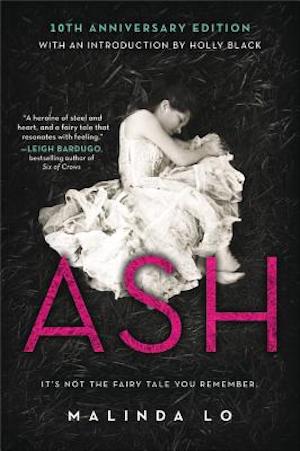
This dreamy, queer retelling is full of fae lore, nudged against fairy politics and the old magic of the Wood. Aisling (Ash) goes to the woods again and again to visit her mother’s grave, and there she encounters a fairy lord who becomes captivated by her. Her stepmother and stepsisters fall into place as the antagonists in the usual way (although with a glimmer of hope for the younger stepsister), but the real fun begins when Ash meets Kaisa, the prince’s Huntress (leader of the hunt, a ceremonial as well as practical position). As they get to know each other, both Ash’s life in servitude and the enticement of the woods dim, and the unusual ending in this version is satisfying and sweet.
Cinder by Marissa Meyer
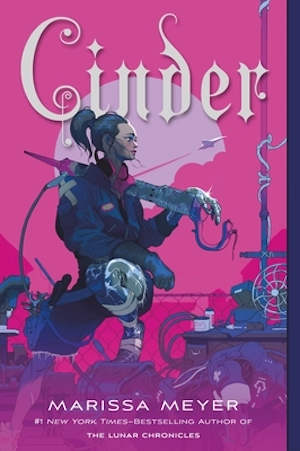
In this version, Cinderella is Cinder, a cyborg with a prosthetic foot that she’s outgrown. A plague without a cure ravages the land (ouch, I’d forgotten that detail before revisiting this), and the prince/emperor Kai is trying desperately to find a bride before he’s forced into a political marriage with Queen Levana, who rules over the Lunar colony. The “godmother” here is a scientist with some key information that he reveals to Cinder, as well as providing her with some much-needed upgrades. While Cinder does get to go to the ball, it’s less about the dancing and more about Levana’s political machinations and things, of course, do not go according to plan. This book doesn’t resolve the romantic feelings sparking between Cinder and Kai, but it does kick off a (now completed) four book series which braids in three additional fairy tale heroines in a beautifully intertwined plot.
Ella Enchanted by Gail Carson Levine
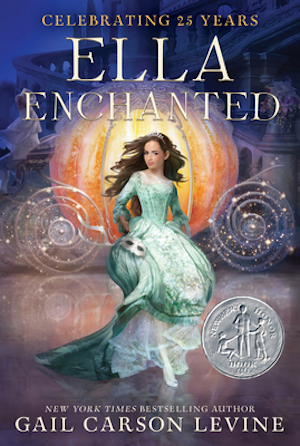
Both the original book and the 2004 film adaptation work from the same concept: as a baby, Ella is “blessed” with the “gift” of obedience by her fairy godmother, Lucinda. From then on, Ella is compelled to immediately obey any command that anyone gives to her. Which might have been fine, probably, mostly, given a loving mother and an understanding family, but as we all know, Ella’s in for some rather unpleasant step-family dynamics. As soon as her stepsisters discover Ella’s fairy gift, they take full advantage of it. The book has a rather more subtle ending, the movie opting for a more dramatic and murderous turn, but both leave room for Ella to discover that she can choose her own destiny.
Ever After (1998)
This is honestly one of my favorite versions of the Cinderella story. It happily dispenses with the notion of a passive Ella waiting for true love to rescue her, introduces the stepsister that we don’t entirely hate, and treats us to a feast of lavish costumes and settings. Anjelica Huston is magnificent, protagonist Danielle’s obsession with books is the thing that truly sparks the prince’s devotion, and the onscreen romance plays out with chemistry and wit. Plus, arguably the best Fairy Godmother personification ever .
Just Ella by Margaret Peterson Haddix
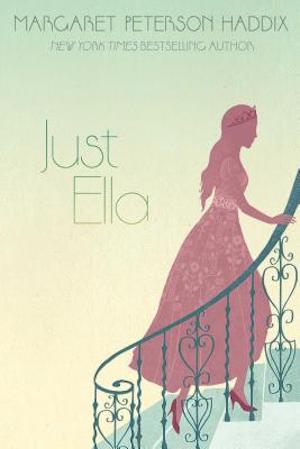
If you’d like an option that’s not so focused on the romance angle, Haddix offers this sly retelling in which Ella is already engaged to the prince and learning how to live as a royal while she awaits her wedding. She longs for more than pretty dresses and pointless conversations, and when she finds out she was only chosen as the prince’s wife because of her beauty, and not because of anything to do with love, she tries to break the engagement. The royal family rejects this idea by throwing her in the dungeon and veering away from the classic Cinderella storyline entirely. Her escape and ensuing decisions are deeply satisfying and give this Ella a chance to see more of the world and have a far greater impact on it than she would ever have had at the palace.
The Shadow in the Glass by JJA Harwood
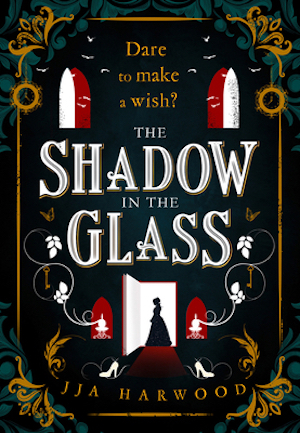
“Cinderella” meets Faustian bargain in Harwood’s dark Gothic twist on the tale. Eleanor was taken in as Mrs. Pembroke’s ward when she was a child, but when the mistress of the household dies, she finds herself relegated to housemaid by the master, treated as a lowly servant to be used however he sees fit. As her situation grows increasingly dire, she makes a desperate bargain with a fairy godmother who is rather less than benevolent. Each wish Eleanor makes comes at a terrible price, and as her life spirals out of control, Eleanor has to decide just what she’s willing to sacrifice to keep her dreams from dying. Vicious as they come, this retelling examines how both circumstances and spirit shape our choices in life.
***
Which are your favorite versions of “Cinderella,” whether in fiction, movies, or anywhere else? And which elements of the story do you most enjoy seeing changed and subverted?
Rachel Ayers lives in Alaska, where she writes cabaret shows, daydreams, and looks at mountains a lot. She has a degree in Library and Information Science which comes in handy at odd hours, and she shares speculative poetry and flash fiction (and cat pictures) at patreon.com/richlayers.










